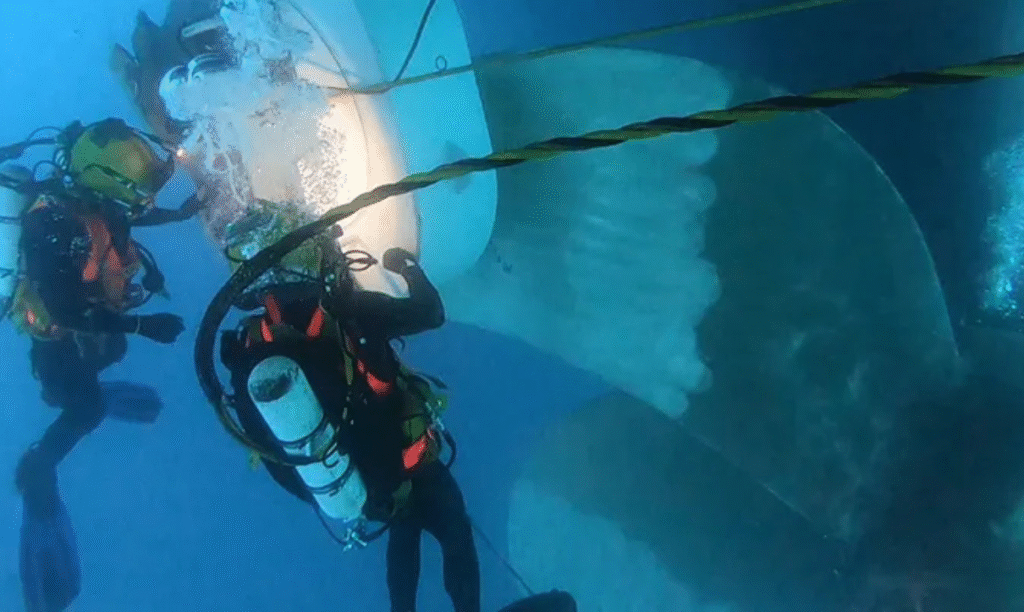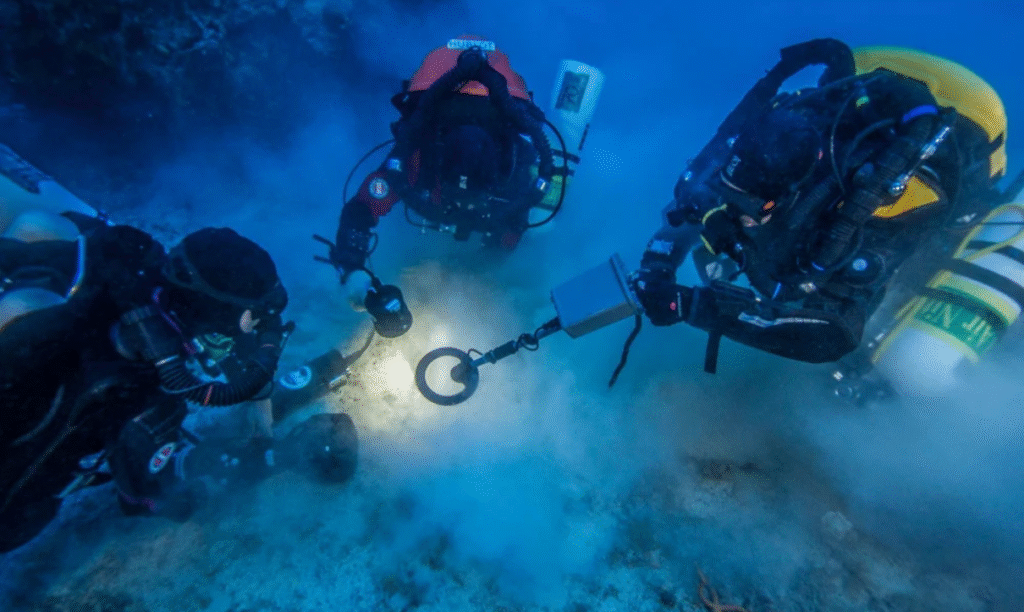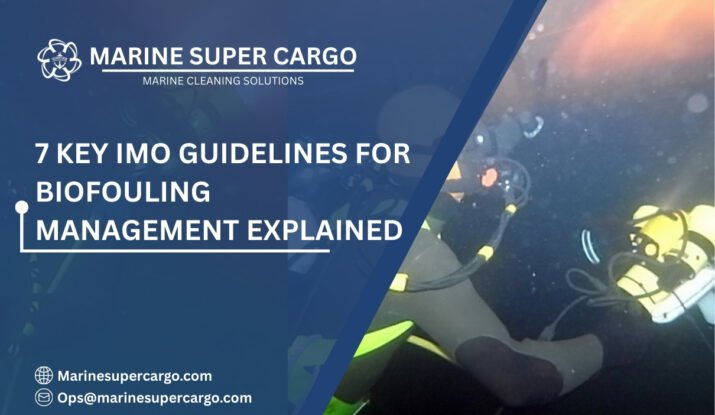Every ship carries more than just cargo—it can carry stowaways. Not humans, but tiny marine organisms clinging to the hull, silently crossing oceans. This phenomenon, known as biofouling, includes microorganisms, barnacles, algae, and other marine life.
If left unchecked, biofouling spreads invasive species, fuels regulatory violations, increases drag, raises fuel costs, and reduces overall vessel efficiency.To address these risks, the IMO guidelines for biofouling management provide a global framework for safe and sustainable vessel operations.
They set standards to prevent environmental damage, maintain propulsion efficiency, and ensure compliance with international maritime regulations. For shipowners, operators, and managers, following these guidelines is no longer optional.
Proper biofouling management protects marine ecosystems, extends hull life, improves fuel efficiency, and reduces maintenance costs. In this guide, we break down the IMO guidelines for biofouling management, their purpose, challenges, and strategies for compliance, ensuring your vessel remains safe, efficient, and environmentally responsible.
Why Biofouling Demands Global Attention
Biofouling isn’t just slime—it’s a chain reaction of problems:
- Increased drag on hulls raises fuel use and costs by up to 40%.
- Invasive species alter ecosystems when ships carry growth to new waters.
- Regulatory penalties occur when ports enforce strict anti-biofouling measures.
Like weeds in a garden that choke plants, biofouling silently undermines a ship’s efficiency and the ocean’s balance. This is why IMO guidelines for biofouling management exist—to restore order in both ship operations and marine ecosystems.

Overview of IMO Guidelines for Biofouling Management
The International Maritime Organization (IMO) first issued guidelines in 2011 to help reduce the spread of invasive aquatic species. Updated regularly, the guidelines offer practical steps, not just theory.
Key focuses of IMO guidelines for biofouling management include:
- Hull Cleaning Plans – Structured maintenance schedules.
- Record-Keeping – Documentation of cleaning, inspections, and coatings.
- Biofouling Management Plans (BFMP) – Similar to safety management systems, tailored for each vessel.
- Use of Anti-Fouling Systems – Approved coatings to slow growth.
- Port and Flag State Compliance – Clear reporting to authorities.
In practice, the guidelines translate into cleaner hulls, cleaner oceans, and cleaner reputations.
The Biofouling Management Plan
Every vessel needs a Biofouling Management Plan (BFMP) as part of the IMO guidelines. Think of it like a ship’s diet plan—it prescribes what actions are essential to stay in shape.
A BFMP should cover:
- Regular inspections.
- Maintenance schedules for coatings and systems.
- Which hull cleaning methods to use and when.
- Record-keeping templates for compliance reporting.
Without this plan, inspections become chaotic, penalties loom, and efficiency suffers.
Record-Keeping in Biofouling Compliance
Documentation is the anchor in compliance. IMO guidelines for biofouling management insist that ships keep:
- Inspection records – Dates, locations, findings.
- Cleaning records – Methods used, diver reports, ROV data.
- Coating system records – When anti-fouling paints were applied and refreshed.
These records provide transparency during Port State Control inspections and ensure smooth clearances.
Biofouling and MARPOL
While MARPOL (Marine Insight – MARPOL Convention) governs pollution, biofouling intersects with its laws. Poor management can cause over-cleaning (damaging coatings and releasing toxins) or under-cleaning (fuel waste and species transfer).
IMO guidelines align with MARPOL to ensure ships:
- Use approved cleaning and waste capture methods.
- Control the disposal of fouling waste.
- Document procedures for accountability.
Compliance here is both a legal obligation and an operational asset.
Compliance Challenges
Despite clear guidance, many operators struggle with IMO guidelines for biofouling management. Common challenges include:
- Jurisdictional differences – Some ports impose stricter measures than IMO baselines.
- High cleaning costs – Balancing eco-practices with budgets.
- Crew training – Ensuring crews understand logging and cleaning methods.
- Technology gaps – Not all fleets have access to ROVs or eco-vacuum capture technology.
These challenges make robust planning and third-party support crucial.
⚓ Expert Underwater Hull Cleaning with Marine Super Cargo 🌊
— Marine Super Cargo (@Marinsupercargo) September 19, 2025
A clean hull means better performance, lower fuel use, and smoother voyages. Marine Super Cargo offers top Underwater Hull Cleaning to keep your vessel efficient, compliant, and ready for every operation. pic.twitter.com/sVKAUCytuS
Best Practices for Implementation
Navigating IMO guidelines isn’t complicated when you steer with the right practices:
- Create a customized Biofouling Management Plan for each vessel.
- Train crew regularly on biofouling awareness and practices.
- Partner with certified hull cleaning contractors (see cleanship.co).
- Use eco-friendly coatings and tools validated by authorities.
- Embrace digital records for transparent reporting.
Compliance isn’t just following rules—it’s creating shipping resilience.
Case Study: Port Detention Avoided
In 2023, a bulk carrier faced potential detention at an Asia-Pacific port due to heavy fouling. Because the operator maintained thorough records following IMO guidelines for biofouling management, they proved cleaning compliance and were cleared in hours.
This highlighted how documentation alone can prevent costly delays and save millions in downtime.

Future Trends in Biofouling Management
The tide is turning toward innovation. Expect IMO guidelines to evolve with:
- AI monitoring – Image-based growth detection.
- Blockchain records – Tamper-proof compliance logs.
- Self-polishing coatings – Longer resistance against fouling.
- International harmonization – Port states aligning local laws with the IMO.
The future paints a picture of smarter compliance and smarter oceans.
Conclusion
The IMO guidelines for biofouling management are not red tape—they’re lifelines to efficiency, compliance, and sustainability.
- They reduce invasive species and protect marine ecosystems.
- They save fuel and cut operational costs.
- They improve compliance confidence in global inspections.
For eco-compliant hull cleaning solutions in line with IMO guidance, explore CleanShip.co.
FAQs:
Q1. Why are IMO guidelines for biofouling management important?
They protect marine ecosystems from invasive species, improve vessel efficiency, and ensure compliance with global environmental laws.
Q2. What is a Biofouling Management Plan (BFMP)?
It’s a structured vessel-specific plan under IMO guidelines detailing inspections, maintenance, cleaning, and record-keeping practices.
Q3. How does biofouling affect fuel efficiency?
By increasing drag, fouling raises fuel consumption. Regular cleaning under IMO guidelines cuts drag and boosts performance.
Q4. What role does MARPOL play in biofouling?
MARPOL laws intersect with IMO biofouling guidelines by regulating the safe disposal of fouling waste and pollution prevention.
Q5. What future changes are expected in biofouling management?
Blockchain compliance, AI growth detection, and eco-friendly coatings will become central to IMO-driven sustainability goals.


